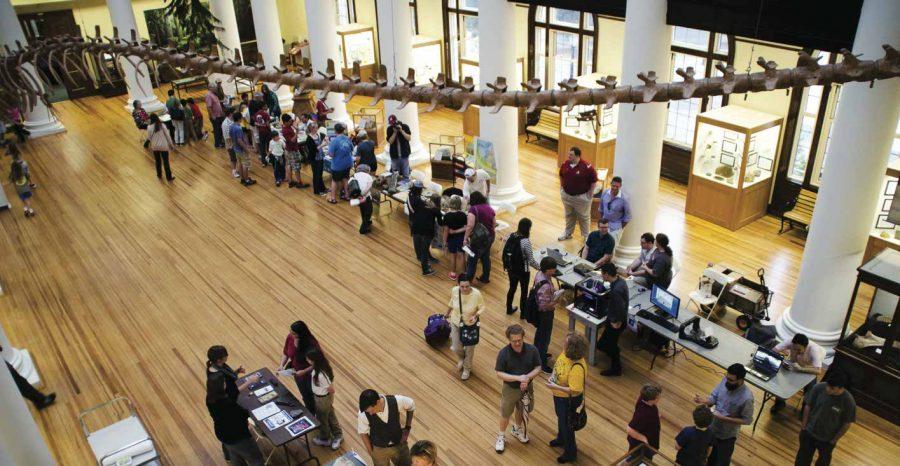More than 80 million years ago, an elasmosaurus plesiosaur died navigating through the ancient waters of what is now the state of Alabama. And thanks to the effort of The University of Alabama paleontology department and the middle schooler who discovered it, the elasmosaur now rests peacefully in Smith Hall.
Noah Traylor made headlines last summer when he accidentally stumbled upon the remains of the creature during a UA event.
“Every year, the museum does a field expedition,” naturalist Todd Hester said. “We take middle school and high school students to a camp in the field. We stay in tents, we have camp showers, and we do either paleontology or archaeology, depending on who we are working with that year.”
Noah has been attending the camps since sixth grade at the behest of his mother, assistant professor Amy Traylor of the social work department.
“He thought it was a rock,” Hester said. “Just took it to our paleontologist and asked, ‘Hey is this something?” And we were like, ‘Yeah, that’s something!’”
Noah’s work does not end there. He has been coming to the University on Fridays to help prepare the skeleton – so far only a collection of vertebrae – for use.
“I’ve been cleaning the fossils,” Noah said. “So far, it’s only the stuff I found, but eventually I’m going to move on to the rest.”
Though Noah does not plan to go into paleontology as a career, looking instead to the military and medical fields, he said he does enjoy his monthly visits and has taken to it as a hobby, joined by five other volunteers from around Tuscaloosa.
“I would like to know more about fossils – how they were before they were fossilized. And I just like going out in the field,” Noah said.
The completed elasmosaur exhibit was unveiled Thursday at the University’s first Fossil Day exhibit.
Sponsored by the National Park Service, which was able to contribute despite the government shutdown, the third annual Fossil Day aims to “promote public awareness and stewardship of fossils,” according to its Facebook page.
Dana Ehret, curator of paleontology, attributes his inspiration for starting the event to his college experience.
“I try to include outreach in all my programs,” Ehret said. “I had a lot of teachers inspire me to be a professor, and I want to give back as much as I can.”
Fossil Day, held from 4-6 p.m. in Smith Hall, featured representatives from the departments of paleontology and archaeology, as well as members of the marine science club, all of whom pulled out some of their best fossils to show to the public. The astronomy department also donated footprint specimens from a local mine.
“The engineering department [brought] their 3-D printers, which are available to anyone for research or other purposes, so Fossil Day is also about promoting resources on campus,” Ehret said. “I use the prints when teaching fossil clubs.”
Sharks’ teeth, 3-D printed souvenirs and refreshments were also given away.
Immediately after the event, Jim Lacefield, adjunct professor of biology and earth science, discussed his new book, “Lost Worlds in Alabama Rocks,” which is now available on Amazon.
The museum isn’t done yet. A larger event is currently in the works for Jan. 26, led by Ehret, who is looking to make the Museum of Natural History much more public and exciting.
“[We are] also considering longterm, changing exhibits to show off what we have,” Ehret said. “We have dinosaur fossils in Alabama, but nobody really knows about it. And we’ve got crocodile remains from the Cretaceous Period we’re looking to display.”
Noah, who was present for the opening, said he “likes what he does in paleontology” and hopes to continue helping the school polish up the elasmosaur.
“When I found out about the opening, Dr. Ehret called me up and said I should be there,” Noah said, “…and my mom said I had to go.”









